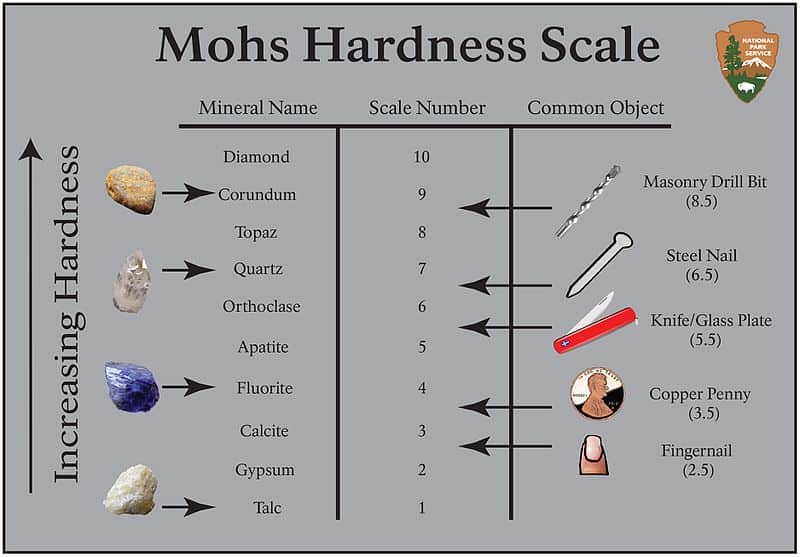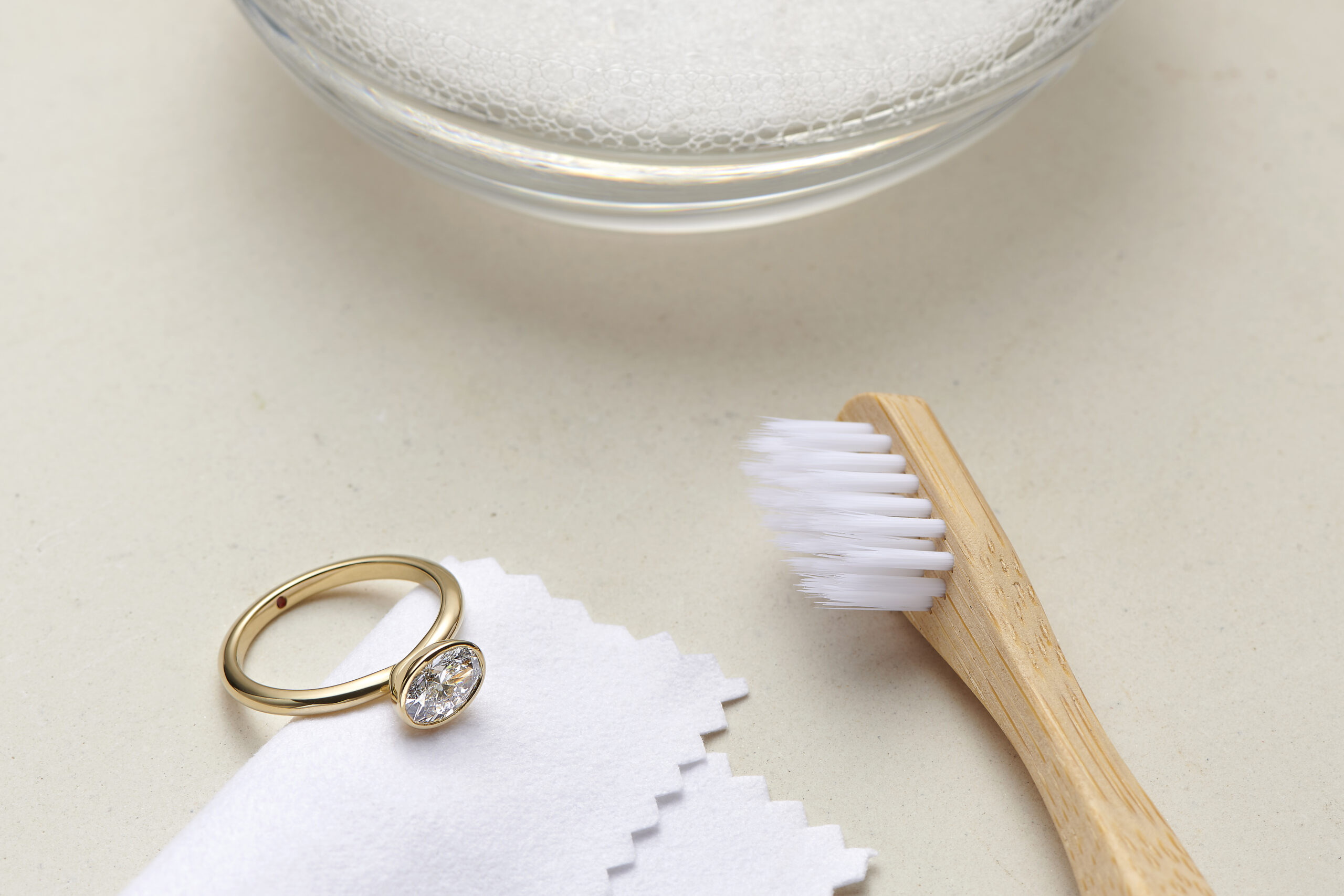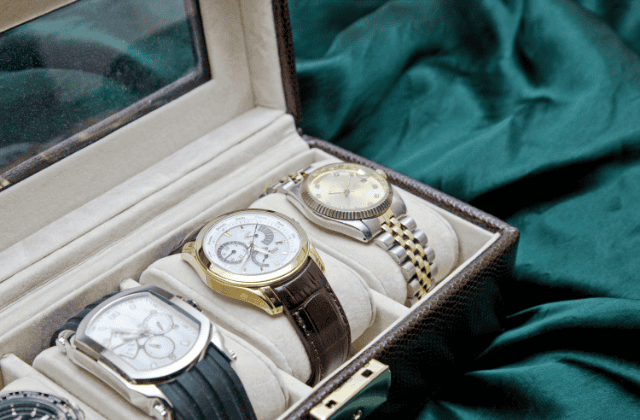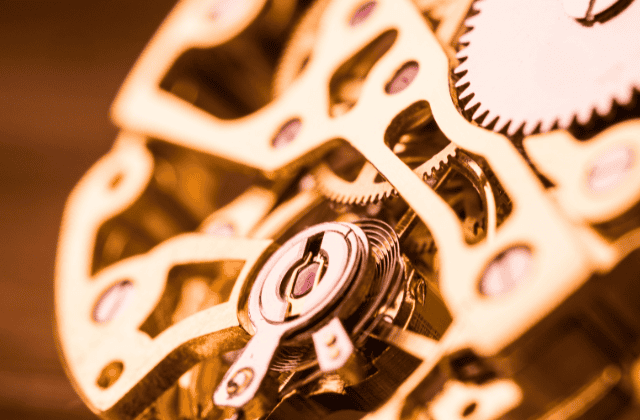Want to know the difference between simulated diamonds and lab-created diamonds?
Perfect, you’re in the right place!
In this Learning Guide, I’ll answer the top questions asked about both of these commonly-confused diamond names like:

- Are Lab-Created Diamonds Real Diamonds?
- Are Simulated Diamonds Fake?
- Can Simulated Diamonds Be Worn Everyday?
Simulated Diamonds vs Lab-Created Diamonds: Origin
Simulated Diamonds
Simulated diamonds are a blanket name used to describe material that is imitating a diamond. Most simulated diamonds are the colorless varieties of other gems. They can be a naturally occurring mineral, or they can be lab grown stones.
The most popular simulated diamonds bought by customers are moissanite, white sapphire, white topaz, and cubic zirconia.
Even though moissanite rings contain a natural stone, it’s very rare. Hence, all moissanite sold in the market is man-made.
Cubic zirconia is also man-made material. There’s no standard on how to create it, so different qualities exist.
White sapphire in chain stores is mostly lab-created, but you can find natural white sapphire at an online retailer like Brilliant Earth.
White topaz is the colorless form of topaz. Since topaz is valued for its color, white topaz is very affordable. Places like Kay Jewelers and Jared will use white topaz as accent stones. Brilliant Earth also has larger white topaz center stones.

Lab-Created Diamond
Lab-created diamonds and gemstones are exactly what they claim to be: created in a laboratory environment. All lab-created gems are real gemstones. Lab-diamonds have the quality factors as mined diamonds. The lab conditions mimic what it’s like for naturally mined diamonds to grow beneath the earth.
A lab grown diamond is a real diamond.
There are two main ways lab-grown diamonds are made. The first process created was the high-pressure high-temperature (HPHT) method. The HPHT method is when a diamond seed is put under extreme amounts of pressure and heat.
A diamond seed is a piece of an earth grown diamond. The diamond seed is placed into a chunk of carbon and put under those conditions. The carbon melts and binds itself to the diamond seed. Once it cools, diamond crystals start to grow.
The chemical vapor deposition (CVD) process also involved a diamond seed. The seed can be natural or a HPHT diamond.
Scientists put the seed into a chamber and fill it with carbon-rich gases, usually methane. The gases mix with high heat, turning into a plasma. The plasma has the ability to break down molecules. It does that, leaving only the pure carbon left around the seed to crystallize.
Simulated Diamonds vs Lab-Created Diamond: Appearance
A big reason why people get diamond alternatives and lab-grown diamonds mixed up is because of the names the industry gave them early on. A lab-created diamond was called a synthetic diamonds early on in the market.
They might also be referred to as a cultured diamond, cultivated diamond, or engineered diamonds.
You’ll still see the name in certain circles, but most of the industry tries to avoid them. The word “synthetic” makes it seem fake, despite a distinct difference between fake diamonds and lab-grown diamonds.
Simulated Diamonds
In order to understand what are simulated diamonds, they have to look like diamonds in order to impersonate them. While they may appear colorless like a diamond, that’s where a lot of the similarities end.
If you’re not familiar with jewelry, you probably would assume a ring with a clear center stone is a diamond ring. But appearance is more than color. When you set simulated diamonds next to the real thing, you start to see the differences.
Diamonds have a subtle mix of white and rainbow light. The two complement each other nicely without overpowering the sparkle. The best brilliance is in an ideal cut round diamond.
Moissanite appears colorless in most lighting. However, even top quality may look tinted in certain lighting. The brilliance from a moissanite is full of rainbow light. It’s often referred to as a disco ball light.
White sapphire is often seen in a larger carat weight at affordable prices. They’re clear, like colorless diamonds. When a white sapphire catches light, it doesn’t give off a brilliance similar to moissanite or diamond.
Experts describe the brilliance of a white sapphire as more of a silvery flash. They often appear cloudy too, despite their hardness rating. Sapphires in general don’t really sparkle like diamonds. Their colorless variety shows that.
Optical Treatments
Simulated diamonds can have treatments done to them, but it’s uncommon. Cubic zirconia can be created in any color. Moissanite, white topaz, and white sapphire aren’t usually treated either.
Read also: White Sapphire vs Cubic Zirconia
Topaz and sapphires are more valued for their colors, so there’s no need for a color treatment. Moissanite, white topaz, and white sapphire are eye-clean majority of the time. That means there wouldn’t be a need for clarity enhancements either.
Simulated Diamond Imitations
Simulated diamonds make up a group of different colorless gemstone species, so the need to make imitations depends on its value.
The most common stone imitation is glass. If anyone is trying to pull the wool over you with diamond simulants, it’ll be with a glass stone. Glass can be faceted to look like a gemstone.
Moissanite or white sapphire will be the most common imitation to have imitations themselves. They are both gemstones. Moissanite and natural white sapphire engagement rings can cost up to a few thousand.
White topaz has been created in a lab, but it’s not sold commercially in fine jewelry. Topaz is one of the most common minerals found, so it doesn’t need to be synthesized.
Lab-Created Diamonds
A lab-grown diamond will have have the same appearances as earth mined diamond. The brilliance is the exact same as long as the diamond grades are the same.
When you look at a natural diamond engagement ring next to a lab-grown diamond engagement ring, you won’t be able to tell the difference.
Some gemologists can. A diamond’s origin can be identified through its inclusions. It gets more difficult with higher clarity grades like VS or VVS diamonds.
Optical Treatments
There are some treatments used on lab-grown diamonds. It’s used to enhance color for the most part, rather than clarity imperfections. The environment of a lab diamond is isolated, so there aren’t other minerals coming into contact like mined diamonds.
They still have inclusions, but they’re less noticeable than mined diamonds. You won’t find very many I clarity lab-grown diamonds because they’re known to have better clarity. It’s common to find VS or VVS diamonds in an affordable range with lab diamond jewelry.
Lab made diamonds that have undergone the CVD process may receive color treatment. Many CVD diamonds come out brown, so the treatment turns them colorless or near colorless. They can also be treated to create lab grown fancy colored diamonds.
Lab-Created Diamond Imitations
A man made diamond can have imitations like a natural diamond. Any stone that is considered a diamond imitation can also be used to be lab grown diamond imitation. Here are some stones that could be masquerading as a lab diamond:
- Moissanite
- White Sapphire
- White Topaz
- Cubic Zirconia
- White Spinel
- White Zircon
- White Quartz
- Rutile
- Glass
A shady lab grown diamond dealer will most often use white topaz, cubic zirconia, or glass in place of a real lab diamond.
Read also: The Best Ways To See If Your Diamond Is Real or Fake
Simulated Diamonds vs Lab-Created Diamond: Price & Value
Simulated Diamonds
Most diamond alternatives are less expensive than a diamond when matched stone for stone. Ring settings can offset the cost.
Here are some estimated prices per carat for popular simulated diamonds:
Resale value of these stones aren’t going to be a lot. Pawn shops and retailers don’t make deals for stones other than diamonds. Exceptions may be other colored gemstones, but not the colorless varieties.
As far as overall value and durability, there’s a few simulated diamonds that work well for everyday wear. The best ones are moissanite and white sapphire.
The Moh scale tells us how well a mineral can stand up to scratches. This could be the everyday things we bump our hands on all day, or simply the dirt and dust particles in the air.
Here’s the Moh ratings for popular simulated diamonds:
Even though white sapphire’s hardness level makes it great for everyday wear, it requires upkeep. It stands up to dirt and dust, but it’s also a magnet for it too. Dirt and dust make white sapphires cloudy. If you’re not wanting to clean it every day, it might not be diamond simulant for you.
Lab-Created Diamond
Lab-created diamonds can be between 20%-70% cheaper than a mined diamond of the same grades and grading reports. They are still graded like natural diamonds-by following the 4Cs of diamond quality.
Since scientists can create a laboratory grown diamond within a month, it makes their value a lot less. Why spend all that money on diamond mining when you could just create one? They cost the industry a lot less and they’re almost perfect. Naturally, the industry would have to sell them for cheaper too.
Lab-grown diamond prices are always changing. That’s why a jeweler might only offer trade-ins on natural diamonds. Likewise, pawn shops don’t accept lab diamonds either for that reason. They can be insured by a jewelry insurance company though. A lot of people think they can’t.
They have the same hardness rating as a natural diamond, which is a 10 on the Moh scale. Only a diamond can scratch a diamond. A diamond has cleavage, and that’s what makes it vulnerable to chipping or breaking. A lot of people think hardness means overall resistance to hits and hard blows. It only relates to scratching.
Most gemstones have cleavage, which makes them vulnerable to chipping. Any of these can break if hit hard enough, including lab-grown diamonds.
Conclusion
So what’s the bottom line?
If you’re trying to choose between a simulated diamond or lab-created diamond, I’d recommend going with a lab grown diamond.
Here’s why:
- Lab grown diamonds have the same unique brilliance of a natural diamond
- Lab grown diamonds have grading reports
- Lab grown diamonds are ethical, so no worries about conflict diamonds
- Lab grown diamonds are 20-70% cheaper than mined diamonds
- Lab grown diamonds have less noticeable inclusions
- Lab grown diamonds have the best resistance to dirt and dust
- Lab grown diamond don’t require as much upkeep as some simulated diamonds
You can pick out your ring from our list of the best synthetic diamonds which only includes the most trusted online retailers.
If a lab grown diamond is still out of your budget, or you just simply want to avoid them altogether, I’d recommend buying a moissanite. Moissanite is the next best thing to a lab-created diamond and is currently the most popular diamond alternative.







